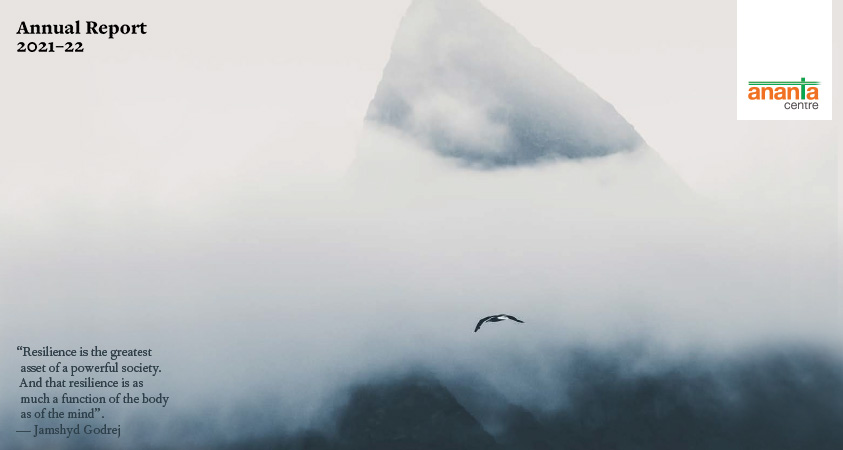Abortive Coup Attempt in Ethiopia
A failed coup attempt that killed four people, including its chief of army staff and a provincial governor, rocked Ethiopia’s polity in late June. The coup leader, Brigadier General Asaminew Tsige, was killed while trying to escape from a hideout. Some 250 people have since been arrested. The coup puts a question mark over Prime Minister Abiy Ahmed’s attempts to introduce democratic reforms to Ethiopia.
Tsige was an Amhara, the second largest ethnic group in the country and one that had historically ruled the country before its civil war. He had served nine years in jail for plotting an earlier coup and was known to be a hardline ethnic nationalist. Released as part of an amnesty by Ahmed, he had been absorbed into the security structure in an attempt to co-opt him. But he began to raise an Amhar militia and called upon his ethnic brethren to arm themselves.
Ahmed is the first Ethiopian leader to come from the Oromo, the largest ethnic group in the country. Since he came to power in April last year, Ahmed has spoken of the need to make Ethiopia a genuine multiparty democracy. At present, the country is ruled by a four-party coalition in which each party represents one of the four major ethnic groups. But political power is restricted to members of the coalition. Ahmed has argued that Ethiopia’s polity needs to give greater political space to its population. However, his experiment has led to the rise of a number of smaller, ethnically based political parties and a spike in ethnic violence. One of them, the National Movement of Amhara, has had over 50 of its members arrested since the coup.
Ethiopia shutdown the internet for several days after the coup, an increasingly common practice among African governments. Ethiopia’s fledgling technology industry has complained of Addis Ababa’s repeated closure of the internet across the country for even minor reasons. In mid-June, the country had a cyber blackout to prevent cheating during national exams.
https://foreignpolicy.com/2019/06/24/ethiopia-is-at-a-very-critical-juncture-abiy-bahir-dar/
https://www.theeastafrican.co.ke/news/africa/Twin-attacks-threaten-new-Ethiopian-government-reforms/4552902-5173616-dfr195/index.html
https://www.bbc.com/news/world-africa-48743081
https://www.theguardian.com/world/2019/jun/24/suspected-mastermind-of-ethiopia-coup-attempt-shot-dead-says-official
https://qz.com/africa/1646789/ethiopia-tech-startups-hurt-by-social-media-block-internet-shutdown/?utm_source=email&utm_medium=africa-weekly-brief
https://www.theafricareport.com/14601/ethiopias-federal-system-is-flawed/
Tanzania Suspends Chinese Port
Tanzanian President John Magufili announced on June 14 he was suspending construction of the $ 10 billion Bagamayo port, the largest Chinese port project in East Africa and a key element of the Belt Road Initiative. He criticized the Chinese for placing conditions that would only be accepted by “mad people” including that no rival ports would be built along much of the coast, China receive a 99-year lease and that Tanzania should not question any investments made in the port area. Magufili is known to favour the expansion of the existing Dar-es-Salaam port and sees Bagamayo as a threat to these plans.
Tanzania’s rebuke to China is unusual for its public nature. However, Tanzania has long been a major destination for Chinese investment and political ties. The assumption is Magufili will use the opportunity to extract better terms from the Chinese. The suspension has not been welcomed by everyone and the action has attracted criticism in Tanzania’s legislature with some parliamentarians urging the government to resume the project. The sovereign wealth fund of Oman is a part investor in the port.
The Washington-based Centre for Strategic and International Studies released an analysis of Chinese port development in Africa, looking at the economic and strategic drivers behind 46 planned or completed port projects.
While most of the ports were commercial in nature, six of them regularly hosted Chinese naval vessels or were dual civilian-military use. The report noted that of ports financed by Chinese entities, 75 per cent were operated by Chinese concerns and 90 per cent were constructed by Chinese companies.
A study by the Journal of Development Economics of 1650 Chinese projects in 49 countries in Africa showed that the home regions of an African leader would on average receive three times more aid while he or she was in power. The study showed there was often an uptick in aid flows in the run up to elections.
https://splash247.com/tanzania-scraps-massive-chinese-port-project/
https://www.thecitizen.co.tz/news/-Talks-on-proposed-Bagamoyo-port–still-going-on-/1840340-5113898-14ppj3v/index.html
https://www.csis.org/analysis/assessing-risks-chinese-investments-sub-saharan-african-ports
https://qz.com/africa/1639750/chinas-aid-to-africa-favors-political-leaders-home-regions/?utm_source=email&utm_medium=africa-weekly-brief
Egypt Moves to Save Water
Egypt has begun enacting tighter water management policies as it faces a decreasing supply of water from its lifeline, the Nile. The country’s Ministry of Water Resources and Irrigation announced in May a 20-year plan to reduce consumption, encourage recycling of water and the use of desalinated water for urban centres. After many years of delay, the government placed a ban on the amount of water-intensive rice that farmers can grow. But in a sign of how difficult it is to move away from water-intensive cash crops, Cairo has yet to touch the lucrative growing of cotton.
The dwindling water from the Nile has meant employment in the agricultural sector has dropped from 44 per cent of the workforce to 27 per cent. Once renown as the breadbasket of the ancient world, Egypt has become one of the world’s largest wheat importers. Last fiscal year it imported 12.5 million metric tonnes.
The Nile has unusually low waterflow among the world’s longest rivers – 85 cubic kms compared to, say, the Amazon’s 5,500 cubic kms. High evaporation rates and increased diversion at its sources means sometimes even less water.
Concerns have repeatedly arisen about the possibility of conflict between Egypt and its upper riparian neighbours. It was one reason the Egyptian intelligence and security chief had taken over water-related external affairs in 2010. Such tensions have receded in recent years thanks to the World Bank-supported Nile Basin Initiative and improved relations between Ethiopia and Egypt.
With a third of its labour employed by industry and agriculture facing a bleak future, the manufacturing sector is the primary focus of the new $ 12 billion loan that Egypt has negotiated with the International Monetary Fund.
https://www.al-monitor.com/pulse/originals/2019/05/dry-nile-river-egypt.html#ixzz5ozpyhdDp
https://www.theeastafrican.co.ke/scienceandhealth/Climate-change-and-growing-population-exerting-pressure/3073694-5131574-15edjhpz/index.html
https://www.al-monitor.com/pulse/originals/2019/05/egypt-imf-revision-loan-industrialization-exports.html?utm_campaign=20190520&utm_source=sailthru&utm_medium=email&utm_term=Daily%20Newsletter
Gulf of Guinea’s Piracy Problem
The Gulf of Guinea is supplanting the Somali coast as the world’s primary centre of maritime piracy. A study by the Observer Research Foundation noted that piracy incidents along the 6000 kilometre gulf coast had jumped from 54 in 2014 to 112 in 2018. As there was no international naval patrolling in the area, unlike in Somalia, and local naval capacity was limited, the pirates were facing little in the way of pushback.
The main local source of piracy was the Niger river delta region of Nigeria, a spillover of local grievances against their government’s exploitation of oil and gas resources in the delta region. The Nigerian ambassador to India, Chris Eze, speaking at an Ananta Aspen Centre lecture event, urged India to consider naval activity in the Gulf of Guinea.
https://www.orfonline.org/expert-speak/piracy-again-back-infest-west-african-waters-what-driving-52339/
The Glory That Was Medieval Africa
The kingdoms of early medieval Africa were genuine rivals to their Western counterparts in wealth, power and even political development. A century and a half before Christopher Columbus, the kingdom of Mali sent unsuccessful expeditions of hundreds of ships to find the “limits of the Atlantic Ocean.” Mansa Musa famously brought between 13 to 15 tonnes of gold with him to Mecca, distributing so much he depressed gold prices for years afterwards. The kingdom of the Kongo elected its leader at a time when monarchs ruled Europe. While the kingdoms of Mali, Songhai and Ghana are well-known, a number of new studies show how smaller African kingdoms were adept at diplomacy, interacted with European interlopers and, most strikingly in the case of Kongo’s struggle with Spain, desperately fought the plague of slavery. Kongo, ironically, was unwittingly destroyed by its ally, the Netherlands, who flooded the kingdom with cheap cloth and ruined its economic base. A recent New York Review of Books essay looks at some of the latest works on mediaeval Africa.
https://www.nybooks.com/articles/2019/06/27/medieval-africa-lost-kingdoms/























